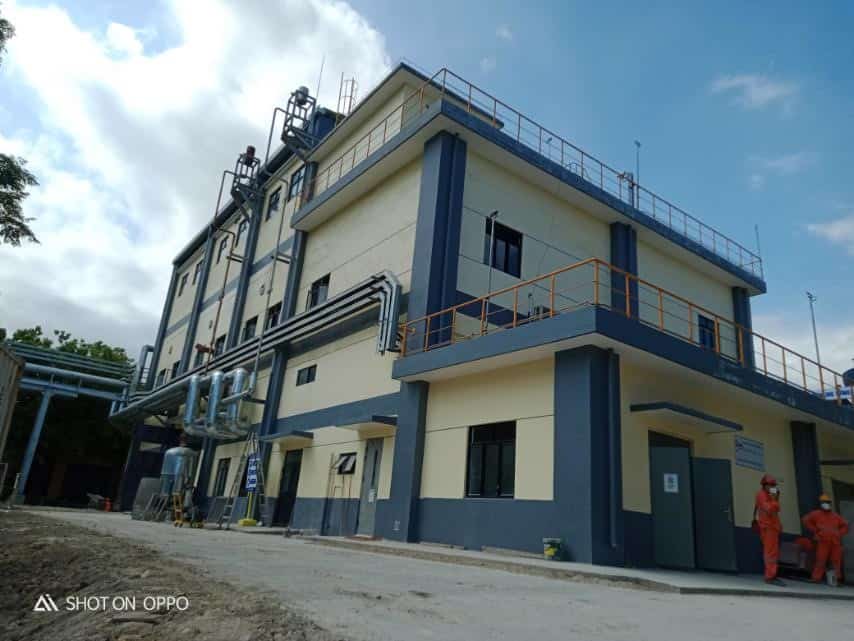CEMEX Holdings Philippines, the country’s sustainability leader in the construction materials industry, has installed a new waste heat recovery facility at its APO Cement plant in Naga City, Cebu.

Luis Franco, President and CEO of CEMEX Holdings Philippines, said the 4.5 MW waste heat recovery facility is a significant piece towards carbon neutrality across CEMEX’s operations by utilizing clean energy and reducing carbon emissions, aligning with CEMEX’s Future in Action Agenda, which underscores a roadmap to becoming a net-zero CO2 company by 2050. CEMEX did not mention the cost of the new facility in its statement.
Since 2022, the APO Cement Plant in Cebu has been self-generating a portion of its energy requirement by leveraging heat recovery technology designed to utilize excess heat generated from the cement production process and transform it into electricity to power its operations.
“In the shifting landscape of today’s industry, CEMEX Philippines does not merely adapt – we lead. Our goal is to fundamentally decarbonize our operations and champion the transition to clean energy,” said Franco in a statement.
“We are determined not only to create world-class building solutions but to ensure that they are developed in a way that aligns with our commitment to sustainability and environmental responsibility,” Franco added.
The APO Waste Heat Recovery facility is just one of the sustainability initiatives undertaken by CEMEX to mitigate the impact of climate change and to decarbonize its operations.
Since 2015, Franco noted, the company’s first heat recovery facility in the Solid Cement plant in Antipolo City has self-generated 18 percent of its total power requirement. Through these investments, CEMEX’s indirect emissions, related to the electricity consumed in its plants, also contribute to reducing its carbon footprint.
“This investment is also aligned with the Nationally Determined Contribution of the Philippines to the UN Framework Convention on Climate Change which aims to reduce the country’s gas emissions by 75 percent in 2030,” he said.
By 2030, CEMEX Philippines aims to source 65 percent of its electricity consumption from clean energy sources such as hydro, wind, solar and biomass technology, in addition to its waste heat recovery facilities.
CEMEX is among the first companies in the global cement industry to validate its 2030 decarbonization goals through the Science-Based Targets initiative for alignment under their new 1.5ºC scenario, the most ambitious pathway defined for the industry.
This validation includes Scope 1, 2, and 3 targets, allowing it to contribute to meet the Paris Agreement goals and comply with the Business Ambition for 1.5°C by the United Nations. In the Philippines, CEMEX is a member of the Net Zero Carbon Alliance (NZCA), a group of local companies and organizations that commits to become carbon neutral on or before 2050.
The global construction materials company that is building a better future through sustainable products and solutions. CEMEX is committed to achieving carbon neutrality through relentless innovation and industry-leading research and development. CEMEX is at the forefront of the circular economy in the construction value chain, and is pioneering ways to increase the use of waste and residues as alternative raw materials and fuels in its operations with the use of new technologies.
CEMEX offers cement, ready-mix concrete, aggregates, and urbanization solutions in growing markets around the world, powered by a multinational workforce focused on providing a superior customer experience, enabled by digital technologies.
If you like this article, share it on social media by clicking any of the icons below.
Or in case you haven’t subscribed yet to our newsletter, please click SUBSCRIBE so you won’t miss the daily real estate news updates delivered right to your Inbox.
The article was originally published in Manila Bulletin and written by Bernie Cahiles-Magkilat







More Stories
Vista Land Celebrates 50 Years with Sandiwa: An Event Honoring Leadership, Legacy, and the Filipino Dream of Homeownership
Vista Land Celebrates Love Month in Ilocos Region
Vista Land Bridges Cebuano Heritage and Progress with Valencia by Vista Estates